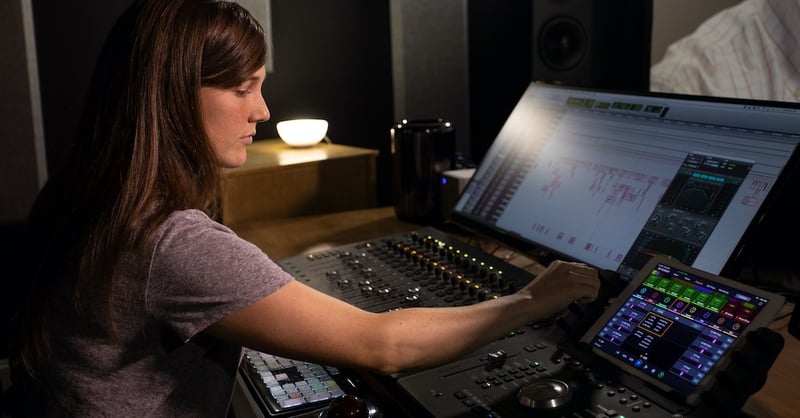Organize your Pro Tools sessions to optimize your workflow and deliver your best.
Whether or not you're already in the habit of working remotely, or if you're working alone or on a team, it's important to have a solid foundation in session organization practices.
Sound artist Matt Yocum (Pet Sematary, The Cloverfield Paradox) highlights some of his most important session organization tips. Though Matt is speaking from the perspective of an effects editor for film, these rules of thumb can most definitely be applied in all types of media editing and would help any project and team stay organized.
One important thing to note before we get started: If you have a supervisor on your project, 99% of the time this person will give you a session template to work with. Don't be afraid to ask questions to your supervisor or the mixing engineer down the line – this could help your team save time and establish good communication.
Watch the video above, and scroll down to download Matt's default session template for film projects.

Some terms in the video:
- Pre-Dubs - Essentially groups of sounds. Goes back to the earlier days of mixing and analog workflows.
- VCA - Controls the output levels of the pre-dub groups.
- Stems - Audio files divided up into different purposes like dialogue, effects, backgrounds etc.
Pre-Dubs
Starting at the top, the first 2 effects pre-dubs typically tend to be hard effects and foley-like things. For example doors, cloth movement, punches, touches. Your mid pre-dubs tend to be more complex and layered sounds such as gunshots, vehicles. Once you move to lower pre-dubs, you can use them for my designed sounds like drones or non-diegetic sounds. You could even split them up in terms of frequency spectrum - high, mids, lows etc. - where it gives you the flexibility to audition each group by its frequency.
Keep in mind all these are very flexible to your project needs - you don't have to stick to these exactly but keeping track of your edit process is crucial. In Matt's example, he categorizes his gunshot effects for a particular shootout scene into "good guys" and "bad guys."
This can be useful when working with the mixer - that way they can easily mix the sounds with perspective. With every element, you want to break sounds into pre-dubs that makes sense and allows you to adjust quickly when the supervisor or direct asks you to change certain things on the fly.
The definition of sound effects and backgrounds can often be confused. Talk to your supervisor and mixer, and categorize them as they say - or be very clear on which sounds live in your session.
Foley Layers
Typically you have a pre-dub of footsteps (usually abbreviated to fs), props, hands (if there was heavy interaction between the characters) and cloth. Keep in mind your project timeline and supervisor's directions.
Backgrounds
Depending on your project you can split your pre-dubs into specific scenes or types of sounds. Think weather, walla, room tones.
Closing Thoughts
The whole point of organizing your session is for you move efficiently. You need to know where to make adjustments and move quickly without having to dig through things. The last thing you want to do is spend time looking for things when you're already crunched for time. The goal is to stay on top of your game, professional, and in the creative zone.
Here's the link to Matt's film template, which can also be found in his previous blog post: File Management Tips for Organized Pro Tools Sessions.
Download Matt's Default Pro Tools Template:
*Please note: This template is only compatible with Pro Tools Ultimate
 Matt Yocum is a sound artist based out of Los Angeles.
Matt Yocum is a sound artist based out of Los Angeles.












